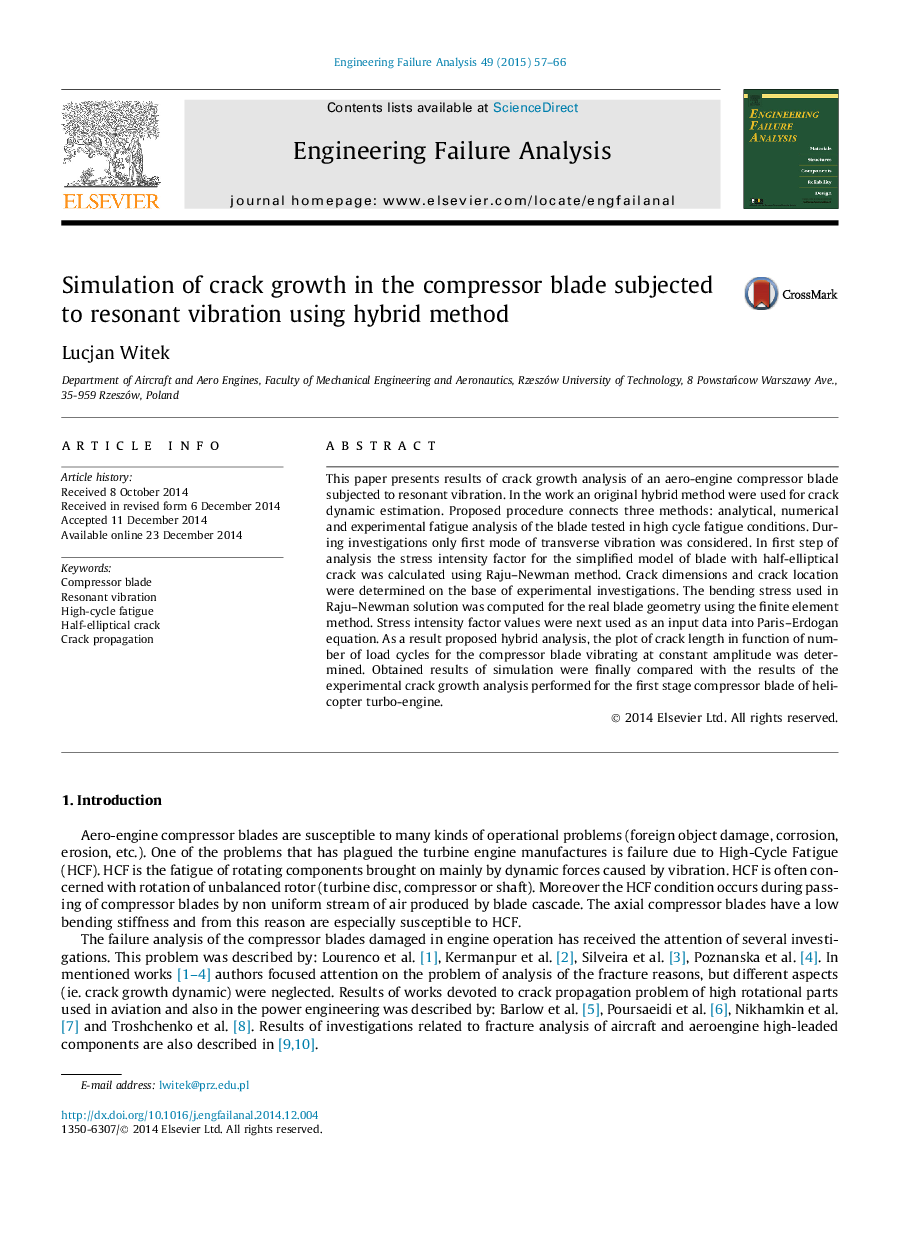| Article ID | Journal | Published Year | Pages | File Type |
|---|---|---|---|---|
| 769424 | Engineering Failure Analysis | 2015 | 10 Pages |
•Original hybrid method was used for crack growth analysis of compressor blade.•First mode of transverse vibration with constant amplitude was considered.•Proposed procedure connects analytical, numerical and experimental methods.•The plot of crack length in function of fatigue cycles was determined.•Results of proposed hybrid analysis were verified in experimental investigations.
This paper presents results of crack growth analysis of an aero-engine compressor blade subjected to resonant vibration. In the work an original hybrid method were used for crack dynamic estimation. Proposed procedure connects three methods: analytical, numerical and experimental fatigue analysis of the blade tested in high cycle fatigue conditions. During investigations only first mode of transverse vibration was considered. In first step of analysis the stress intensity factor for the simplified model of blade with half-elliptical crack was calculated using Raju–Newman method. Crack dimensions and crack location were determined on the base of experimental investigations. The bending stress used in Raju–Newman solution was computed for the real blade geometry using the finite element method. Stress intensity factor values were next used as an input data into Paris–Erdogan equation. As a result proposed hybrid analysis, the plot of crack length in function of number of load cycles for the compressor blade vibrating at constant amplitude was determined. Obtained results of simulation were finally compared with the results of the experimental crack growth analysis performed for the first stage compressor blade of helicopter turbo-engine.
